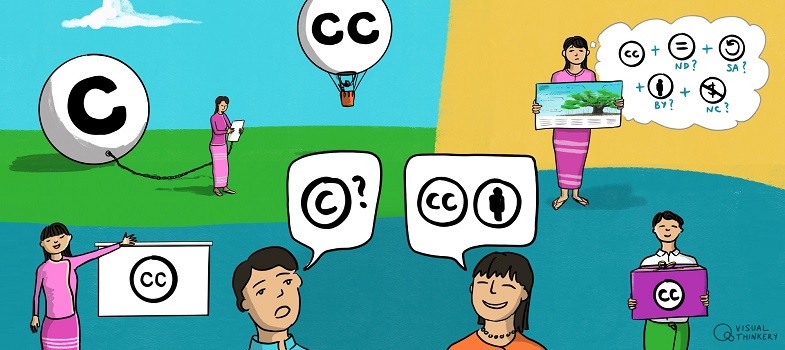Exceptions in the Myanmar Copyright Act and higher education
Earlier in this unit you read about needing to ask permission from the copyright holder to use of copyrighted material. However, there is a number of exceptions in relation to literary works under the new Myanmar Copyright Act, including:
- reproduction for private use
- quotation
- exploitation for educational purposes
- reproduction and translation in libraries or archives
- exploitation for the press
- ephemeral reproduction for repair or as a backup
- exploitation for disabled people.
The new Copyright Act also excludes any copyright violation that may occur through government activity connected to public policy and security.
As you can see, the new Act allows for works to be reproduced for educational purposes. However, there are certain exceptions to this and a number of rules regarding reproduction of material within this context. One restriction is that you cannot copy a whole book, musical notation or digital database, or a substantial part. This means that you would need permission from the copyright holder to photocopy an entire book, even if you were using it for educational purposes.
In Section 27 of the new Copyright Act, copyright clearance for resources being used for educational purposes and within prescribed amounts is not required. However, you do need to ensure that you reference or include details of the author/creator and the work being reproduced. This applies to:
- a.reproducing any parts of published work or article in newspapers, magazines or journals for the purpose of teaching
- b.incorporating copies of materials mentioned in (a) into digital or printed syllabi for teaching purposes and by education organisations – electronic syllabi should be stored on a secure network that can only be accessed by the relevant students and teachers
- c.a combined use of electronic or printed format literary or artistic works for assignments or research purposes (personal use only), or preservation in the library by persons who will study a specific syllabus.
The new Myanmar Copyright Act does not currently provide a specific definition of the term ‘fair use’ or ‘fair dealing’. This means that clear guidance on what percentage of a book or how many pages can be copied without infringing copyright is needed to ensure that use for educational purposes does not accidentally infringe copyright.
In education, the cost of books and resources is of concern to teachers and students alike. As we saw earlier in this unit, current practice may not always have considered copyright. Whereas previously we might have photocopied resources many times and distributed them, we now need to ensure that we are not breaching copyright when we duplicate material. We also need to ensure that we are referencing the materials we use.
Reflection
What does the new Myanmar Copyright Act mean for your practice? Do you reference the resources you use for teaching and learning? Do you know who owns the copyright of the resources that you use? If you wanted to reproduce large sections of a book and your usage exceeded ‘fair use’ for educational purposes, how would you seek permission to copy the material?
More generally, how might the new Copyright Act impact on our universities? How can we ensure that libraries have enough books and other resources? Is there someone you can ask for advice and assistance at your university or college? How could you support colleagues and students in deepening their understanding of copyright and referencing?
Limitations and exceptions to copyright law
